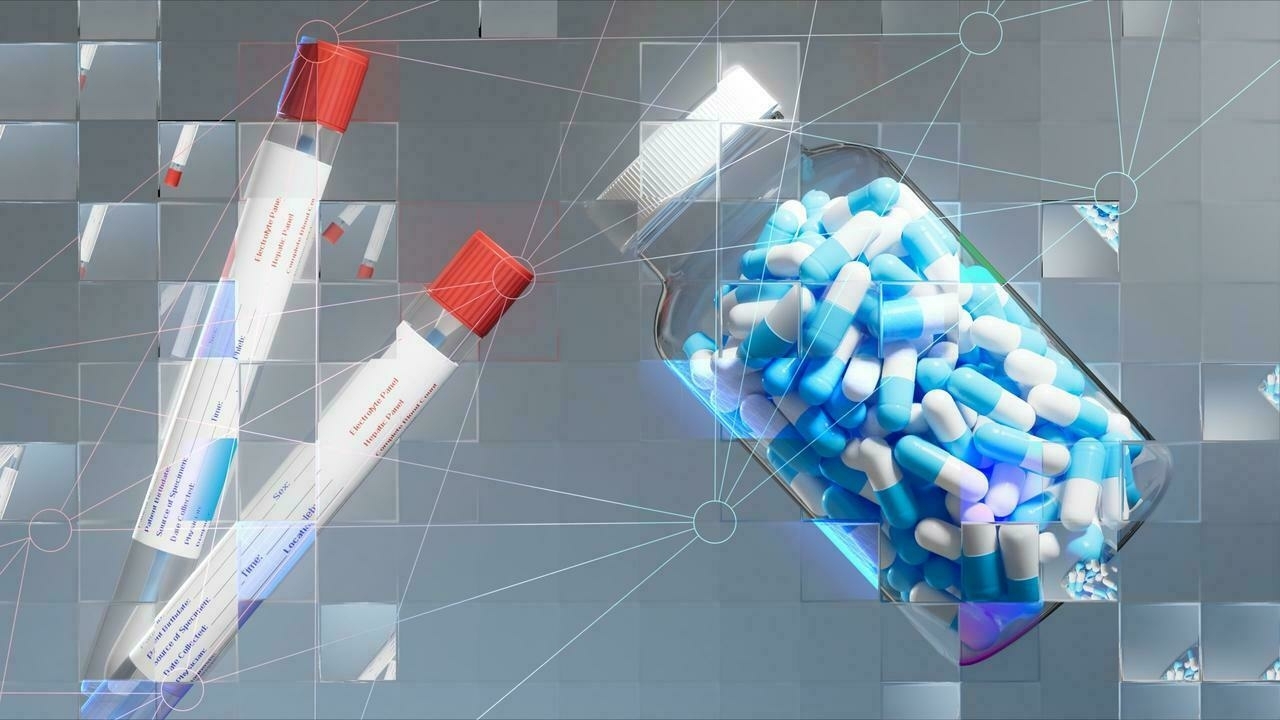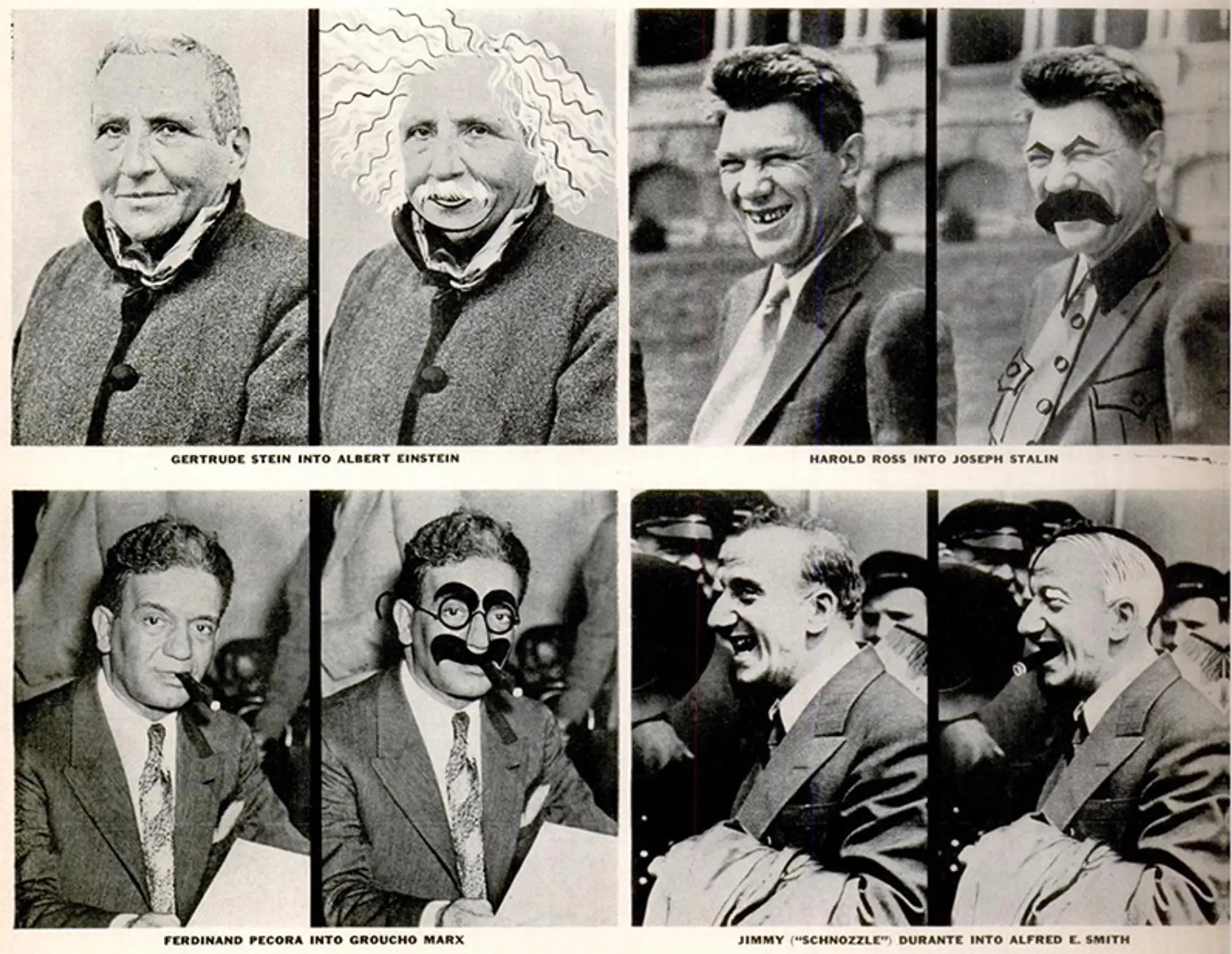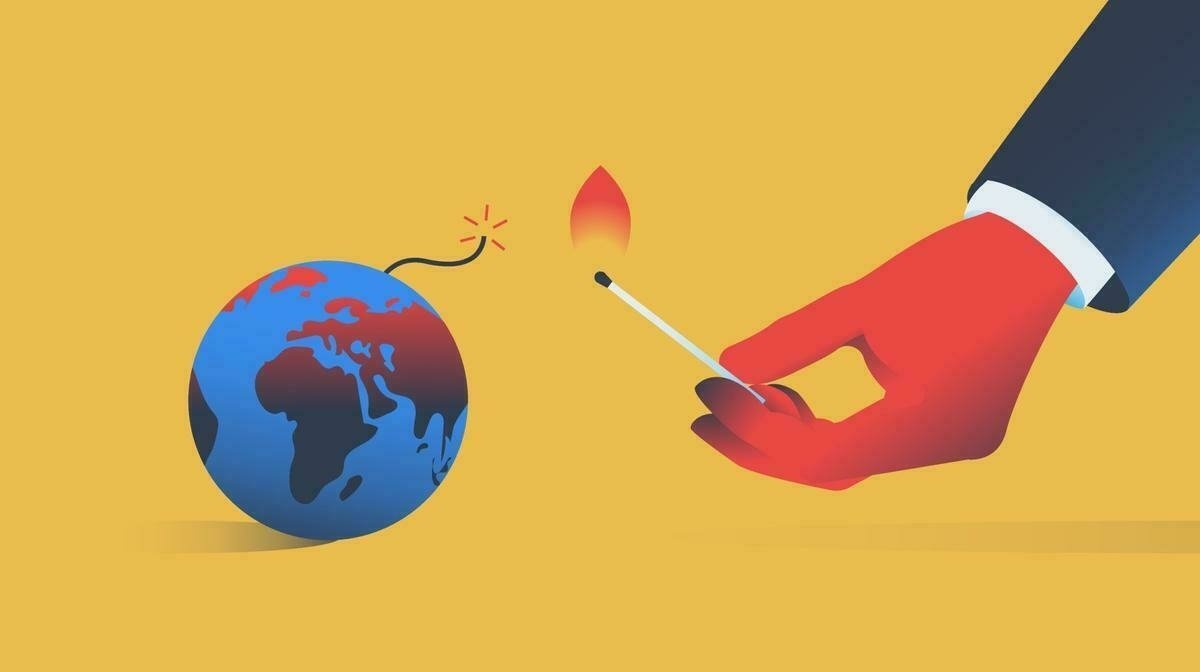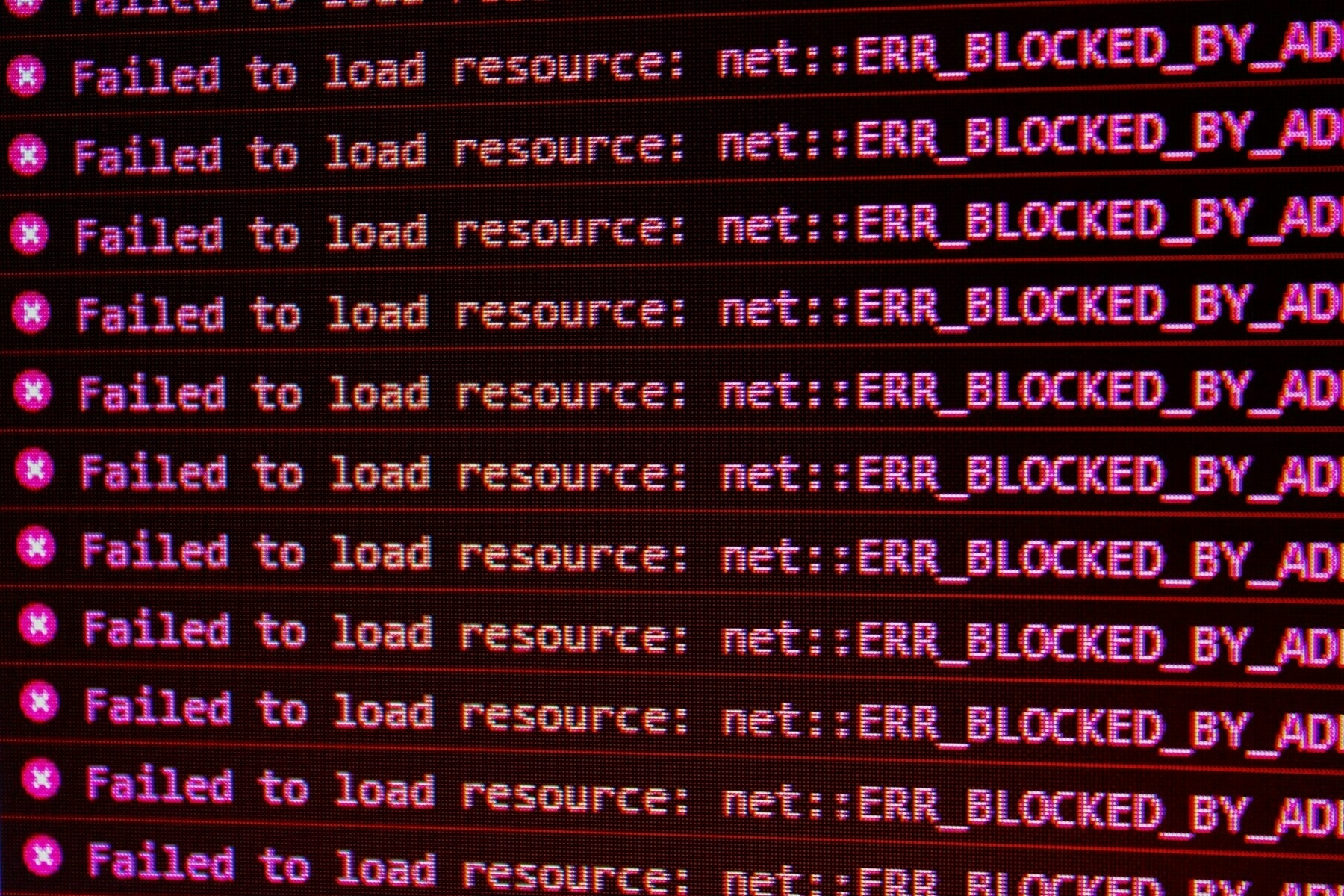From misdiagnosis and error to unequal access to care

I am in agreement with this article in The Guardian by Charlotte Blease, a researcher at Harvard Medical School and author of the forthcoming book Dr Bot: Why Doctors Can Fail Us – and How AI Could Save Lives. Her point is that while AI might not be perfect, neither are doctors, and it can definitely speed up and help with diagnoses.
Personally, I’m now 7.5 months into trying to get a diagnosis for symptoms I started experiencing on January 15th of this year. It’s the nature of medicine to do tests and rule things out, but a combination of NHS resourcing and (some) health professionals' attitudes have made the experience sub-optimal.
For example, when presenting at A&E thinking I was having a heart attack, I had an echocardiogram followed by a doctor taking me into a side room and somewhat aggressively asking me why I was there. When a GP found out that I’m vegetarian, he suggested I start eating meat — even though it had nothing to do with the issue at hand. I’ve been waiting almost six weeks for a urine test result.
So, I’ve been supplementing the information I get from health professionals and via the NHS app with asking LLMs (usually Perplexity or Lumo) about what my test results might mean, and what else might be causing the symptoms. It’s given me a list of things to ask doctors, nurses, and those performing tests, and it’s helped me know what kinds of things I should be avoiding — other medications, supplements, food, drinks, activities, etc.
Obviously, this needs to be done with huge amounts of safeguards and guardrails in place. But not to use technology which may prove useful at scale? I think that’s irresponsible.
Given that patient care is medicine’s core purpose, the question is who, or what, is best placed to deliver it? AI may still spark suspicion, but research increasingly shows how it could help fix some of the most persistent problems and overlooked failures – from misdiagnosis and error to unequal access to care.
As patients, each of us will face at least one diagnostic error in our lifetimes. In England, conservative estimates suggest that about 5% of primary care visits result in a failure to properly diagnose, putting millions of patients in danger. In the US, diagnostic errors cause death or permanent injury to almost 800,000 people annually. Misdiagnosis is a greater risk if you’re among the one in 10 people worldwide with a rare disease.
[…]
Medical knowledge also moves faster than doctors can keep up. By graduation, half of what medical students learn is already outdated. It takes an average of 17 years for research to reach clinical practice, and with a new biomedical article published every 39 seconds, even skimming the abstracts would take about 22 hours a day. There are more than 7,000 rare diseases, with 250 more identified each year.
In contrast, AI devours medical data at lightning speed, 24/7, with no sleep and no bathroom breaks. Where doctors vary in unwanted ways, AI is consistent. And while these tools make errors too, it would be churlish to deny how impressive the latest models are, with some studies showing they vastly outperform human doctors in clinical reasoning, including for complex medical conditions.
Source: The Guardian
Image: Alan Warburton, Better Images of AI
💥 Thought Shrapnel: 31st August 2025
This is the last week of Thought Shrapnel being in “low-power mode” over the summer. Please find 10 interesting things with minimal commentary ☀️

Image CC BY-NC-ND su-lin
- 99 Problems: The Ice Cream Truck’s Surprising History (Longreads) — “The Glasgow Ice Cream Van Wars sound like they had all the elements of a cozy crime novel, but the reality was very different. The city’s Serious Crime Squad was dispatched to investigate and stop the fighting, but quickly became the object of derision, renamed by the locals as the Serious Chimes Squad, thanks to their inability to apprehend the perpetrators.”
- We must fight age verification with all we have (User Mag) — “Age verification, like book bans and obscenity laws, will not be narrowly used to prevent access to pornography–it will be used to “legislate morality,” control access to information and limit people’s freedom to self-manage their health and family well-being according to their own morals.”
- A new personality type - ‘Otrovert’ - is here to make life even more confusing (GQ) — “‘Otrovert’ – coined this year by New York psychiatrist Dr. Rami Kaminski – describes people who are averse to communing with groups, a bit like Groucho Marx who famously refused to join a club that would have him as a member (it seems the term “Marxist” was already taken). Other characteristics of otroverts include being an ‘original thinker’, ‘valuing deep connections’ and preferring ‘authenticity over conformity. If that sounds relatable, why not join the club? Erm. Maybe not.”
- The ROI of exercise (Herman’s blog) — “It’s well understood that a good exercise routine is a mixture of strength, mobility, and cardio; and is performed at a decent intensity for 2-4 days a week for at least 45 minutes…. This totals about 3 hours a week, or 156 hours per year. If we extrapolate that over an adult lifetime, that’s about 8,500 hours of exercise, or about a year of solid physical activity…[O]ver a lifetime, one full year of exercise leads to 10 full years of extra life. That’s a 1:10 return on investment! So even without any of the additional benefits… this is still one of the best investments you can make.”
- Are Marathon Runners More Likely to Get Cancer? (VICE) — “It all started when Dr. Timothy Cannon, an oncologist at Inova Schar Cancer Institute, noticed something off. Three of his patients, all under 40, were super-fit endurance athletes. They didn’t drink. They didn’t smoke. One was vegan. Yet all had advanced colon cancer, and none of the usual risk factors. So, he turned this mystery into a research study.”
- Writing with LLM is not a shame. An essay about transparency on AI use. (reflexions) — “I think we fell in a ethical fallacy, in a way, with the emergence of a new tech. Even if we compare LLM with other techs, we do not have the same ethics requirements against LLM. Some might say we have to because ELM can generate much more than previous techs but we are falling again in the same reasoning trap.”
- Britain leads the world in a new global business—a criminal one (The Economist) — “Britain accounts for 40% of phone thefts in Europe… British thieves’ favoured method is to approach from behind on an electric bike, grab an unlocked phone and put it in a “Faraday bag” to prevent tracking; most of the nicked phones end up in China. Meanwhile, around 130,000 cars were stolen in Britain last year, a rise of 75% in a decade. SUVs are popular targets, for export to the Gulf and Africa, where they can handle poor roads.”
- We Are Still Unable to Secure LLMs from Malicious Inputs (Schneier on Security) — “This kind of thing should make everybody stop and really think before deploying any AI agents. We simply don’t know to defend against these attacks. We have zero agentic AI systems that are secure against these attacks. Any AI that is working in an adversarial environment—and by this I mean that it may encounter untrusted training data or input—is vulnerable to prompt injection. It’s an existential problem that, near as I can tell, most people developing these technologies are just pretending isn’t there.”
- Reform and the UK press (mainly macro) — “The recent coverage of immigration and asylum in the right wing press has been almost apocalyptic. They have been hyping small demonstrations as if they were indicators of impending national unrest, and the broadcast media has largely followed their lead. The recent celebration by the Mail, Sun and Telegraph of someone who pleaded guilty to inciting racial hatred makes “Hurrah for the Blackshirts” sound rather tame. We have reached the point where a majority of the print media are in effect encouraging civil unrest and racial hatred, yet thanks to political short termism this press remains essentially unaccountable for their behaviour.”
- The great university rip-off (The New World) — “Among dozens of my friends leaving university this year, only three are heading straight into employment. The rest are either going on to further study or taking a gap year before doing so – in their own words, to avoid the inevitable hellscape of the grad job market. For those of us who have braved the post-university job application humiliation ritual, we know we should be grateful to even get a rejection letter, and to try not to have a breakdown when our parents send us 8,000 articles about graduates on universal credit or AI replacing interns.”
👋 See you next week!
– Doug
💥 Thought Shrapnel: 24th August 2025
Thought Shrapnel is in “low-power mode” over the summer. Please find 10 interesting things with minimal commentary ☀️

- 4o-4 Not Found (thejaymo) — “Looking closer, 72% of Character.AI’s users are female. Which suggests the rug-pull of 4o more widely may be less a sad incel AI girlfriend story and more an AI boyfriend apocalypse.
- Review of Anti-Aging Drugs (Aging Matters) — “My favorites from this list are Melatonin, Berberine, NAC, Rapamycin, and Selegiline. I can recommend the first three unequivocally. Rapamycin has down sides that you should consider, and Selegiline has effects on mood and energy that you may like or dislike. Personally, I take a variety of anti-inflammatory supplements, and I’m glad to have an excuse to eat dark chocolate.”
- Digital Sovereignty Index (Nextcloud) — “Whether it’s about protecting sensitive data, avoiding vendor lock-in or ensuring democratic control over infrastructure, the debate around digital sovereignty is gaining momentum. But how sovereign is a country’s digital infrastructure in practice?”
- Porn censorship is going to destroy the entire internet (Mashable) — “The stated reason behind these laws is to “protect children.” But as journalist Taylor Lorenz pointed out, in the UK, age verification is already preventing children from accessing vital information, such as about menstruation and sexual assault.”
- Sunny Days Are Warm: Why LinkedIn Rewards Mediocrity (Elliot C Smith) — “The vast majority of it falls into Toxic Mediocrity. It’s soft, warm and hard to publicly call out but if you’re not deep in the bubble it reads like nonsense. Unlike it’s cousins ‘Toxic Positivity’ and ‘Toxic Masculinity’ it isn’t as immediately obvious. It’s content that spins itself as meaningful and insightful while providing very little of either. Underneath the one hundred and fifty words is, well, nothing. It’s a post that lets you know that sunny days are warm or its better not to be a total psychopath. What is anyone supposed to learn from that.”
- The End of Handwriting (WIRED) — “But if kids always have access to devices, does it really matter whether they can write with their hands? Yes and no. If the past few years of digital nomad work and vibe coding have taught us anything it’s that, professionally, handwriting may not be all that necessary in a lot of fields. The problem is that learning handwriting might be necessary to learn everything else. “We don’t yet know what we are losing in terms of literacy acquisition by de-emphasizing handwriting fluency,” Ray says.”
- ‘A climate of unparalleled malevolence’: are we on our way to the sixth major mass extinction? (The Guardian) — “It turns out that there are only a few known ways, demonstrated in the entire geologic history of the Earth, to liberate gigatons of carbon from the planet’s crust into the atmosphere. There are your once-every-50m-years-or-so spasms of large igneous province volcanism, on the one hand, and industrial capitalism, which, as far as we know, has only happened once, on the other.”
- Why I’m all-in on Zen Browser (Ben Werdmuller) — “So I was pleased to rediscover Zen Browser, which has improved in leaps and bounds since I last tried it. It has a very Arc-inspired UI that gets out of your face quickly, with all the customization and keyboard shortcuts you’d expect from something built on top of Firefox. I use vertical tabs in a sidebar that auto-hides, and I can navigate just as smoothly as I ever did with Arc.”
- Changes Coming to Higher Ed (Hybrid Horizons) — “Some may not land as written; timelines slip, context matters, contexts change, things shift and people can surprise us. Still, read this as a calm, plain-spoken brief about potential shifts coming in the sector.”
- The circular economy could make demolition a thing of the past – here’s how (The Conversation) — “This paradigm shift – from a single-use mindset to one of “reduce, reuse, recycle” – is already common in other fields. It is now starting to take hold in construction through various global initiatives that seek to integrate these concepts into safer, more sustainable and more durable buildings. They show how this can be achieved through conscious design, based on concepts such as modularity and standardisation.”
👋 See you next week!
– Doug
💥 Thought Shrapnel: 17th August 2025
Thought Shrapnel is in “low-power mode” over the summer, sharing 10 interesting things with minimal commentary ☀️

- Witty wotty dashes (Aeon) — “Because of its radical openness to difference, the doodle tends to function as a kind of meta-aesthetic attuned to containing a network of ambivalent affects and fleeting everyday aesthetic experiences that become increasingly common in the 20th century.”
- A moment that changed me: I resolved to reduce my screen time – and it was a big mistake (The Guardian) — “[R]educing my screen time had become its own form of phone addiction. Rather than escaping the need to seek validation from strangers online, I had happened upon a new way to earn their approval.”
- Chatbots Can Go Into a Delusional Spiral. Here’s How It Happens. (The New York Times) — “Sycophancy, in which chatbots agree with and excessively praise users, is a trait they’ve manifested partly because their training involves human beings rating their responses.”
- How to not build the Torment Nexus (Mike Monteiro’s Good News) — “As industries mature, they tend to get a little boring. And as industries age, and start seeing their own collapse over the horizon, they tend to get… defensive. Bitter. Conservative… Tech, which has always made progress in astounding leaps and bounds, is just speedrunning the cycle faster than any industry we’ve seen before.”
- System Font Stack — “Webfonts were great when most computers only had a handful of good fonts pre-installed. Thanks to font creation and buying by Apple, Microsoft, Google, and other folks, most computers have good—no, great—fonts installed, and they’re a great option if you want to not load a separate font.”
- Signal boss: ‘disturbing’ laws show the UK doesn’t understand tech (The Times) — “She says that one of the “most pernicious and alarming” problems is that if a company accepts a “technical capability notice”, it is prohibited from informing users. The upshot: “We don’t know [if any] other company has received one of those notices and responded by rolling over.” Whittaker says Signal has not received one, but that the company would sooner “leave” the UK than comply.”
- Welcome to the Cosmopolis (Contraptions) — “In brief, new technologies induce new normals through protocolization of what is initially a weird and scary sort of monstrousness irrupting across a frontier. Beyond that frontier lies a new kind of territory, a new kind of “soil” on which societies can be built.”
- Funding Open Source like public infrastructure (Dries Buytaert) — “Governments already maintain roads, bridges, and utilities, infrastructure that is essential but not always profitable or exciting for the private sector. Digital infrastructure deserves the same treatment. Public investment can keep these core systems healthy, while innovation and feature direction remain in the hands of the communities and companies that know the technology best.”
- “Privacy preserving age verification” is bullshit (Pluralistic) — “NERD HARDER! is the answer every time a politician gets a technological idée-fixe about how to solve a social problem by creating a technology that can’t exist. It’s the answer that EU politicians who backed the catastrophic proposal to require copyright filters for all user-generated content came up with, when faced with objections that these filters would block billions of legitimate acts of speech.”
- The Logic of the ‘9 to 5’ Is Creeping Into the Rest of the Day (The Atlantic) — “One way to look at 5-to-9 videos is as the product of people trying to make the most of the leisure time they have… But in attempting to take control back from their jobs, many 5-to-9 video creators end up reproducing a version of the thing they are trying to distance themselves from. If you clock out, go home, and continue checking things off a list, you haven’t really left the values of work behind.”
👋 See you next week!
– Doug
💥 Thought Shrapnel: 10th August 2025
That’s right, Thought Shrapnel continues in “low-power mode” over the summer, so I’ll continue to share 10 interesting things but provide minimal commentary ☀️

- Human speech may have a universal transmission rate: 39 bits per second (Science) — As someone who has enjoyed and endured many conference presentations in my time, this is very interesting to me. “No matter how fast or slow, how simple or complex, each language gravitated toward an average rate of 39.15 bits per second.”
- Tuition fees are rising again and nobody is happy – it’s time to actually fix our broken university sector (The Guardian) — A short, well-written piece by Zoe Williams about the parlous state of Higher Education. Depending on his results next week, hopefully my son is heading off to a university which will still exist in three years' time…
- Marking the Government’s homework on public sector AI (imperfect offerings) — Helen Beetham with a lengthy analysis of what’s going on in the UK with relation to AI, which is possibly best summarised by her withering put down of the memoranda of understanding the government has signed with Google and Microsoft, respectively, as “a cute name for a declining world power signing its assets over to the new ones.” Mexit, not Brexit, is the new priority for the UK (The Register) — Related to the above, although to do with Microsoft licenses rather than AI, Rupert Goodwins notes that giving £9 billion over 5 years means that “Microsoft gets one pound of every 13 spent” by the UK government on digital technology.
- Didn’t Take Long To Reveal The UK’s Online Safety Act Is Exactly The Privacy-Crushing Failure Everyone Warned About (TechDirt) — 5 of the top 10 apps in the Apple store are VPNs, and “Yes, you read that right. A law supposedly designed to protect children now requires victims of sexual assault to submit government IDs to access support communities.” Slow claps all round.
- In the Future All Food Will Be Cooked in a Microwave, and if You Can’t Deal With That Then You Need to Get Out of the Kitchen (Random Thoughts) — Colin Cornaby with an absolutely on-point parody of the AI bubble. “I saw online another restaurant owner suggested deploying one thousand microwaves for each chef. This sounds like a great idea.”
- The Sunday Morning Post: Why Exercise Is a Miracle Drug (Derek Thompson) — I can’t do proper cardio at the moment, but I’m trying to get a long walk in every day and, six days out of seven, I’m lifting weights. Exercise is important: “To a best approximation, aerobic fitness and weight-training seem to increase our metabolism, improve mitochondrial function, fortify our immune system, reduce inflammation, improve tissue-specific adaptations, and protect against disease.”
- Face it: you’re a crazy person (Experimental History) — I love the way that Adam Mastroianni writes, and this post is a great example of why. “There’s no amount of willpower that can carry you through a lifetime of Tuesday afternoons. Whatever you’re supposed to be doing in those hours, you’d better want to do it.”
- You can’t fight enshittification (Pluralistic) — A little bit pessimistic, but nevertheless true from Cory Doctorow: “Enshittification is not the result of people making bad choices: it’s the result of bad policies that produce bad systems… When all your friends are going to a festival, are you really going to opt out because the event requires you to use the Ticketmaster app (because Ticketmaster has a monopoly over event ticketing)? If so, you’re not gonna have a lot of friends, which is a pretty shitty way to live.”
- Do we need the wealthy? (Funding the Future) — Richard Taylor, Emeritus Professor of Accounting at the University of Sheffield’s Management School, with a well-argued video (with transcript) of why we shouldn’t be particularly bothered if rich people threaten to quit the UK due to a higher tax burden.
👋 Until next week!
– Doug
💥 Thought Shrapnel: 3rd August 2025
Thought Shrapnel is in “low-power mode” over the summer, sharing 10 interesting things with minimal commentary ☀️

- The Planet Can’t Afford Billionaires (TIME) – “The scale of today’s social and environmental injustices cannot be fixed through minor tweaks to the existing financial system.”
- 2,500-year-old Siberian ‘ice mummy’ had intricate tattoos, imaging reveals (BBC News) – This is genuinely incredible, both in terms of the reconstruction and the talent of prehistoric tattoo artists.
- The seven strangest historical discoveries made in 2025 (The Week) — While we’re talking about history, did you know that the eruption of Mount Vesuvius 2,000 turned one mans brain into glass?
- Learning Is Slower Than You Think — And That’s the Point (The Intelligence Loop) – I love this line: “The struggle of learning doesn’t just shape the individual. It creates community.”
- I’m not ignoring your message – I’m overwhelmed by the tyranny of being reachable (The Guardian) – This article not only cites philosopher Byung-Chul Han, author of Psychopolitics but also uses the phrases “multiverse fatigue” and “attention residue.” Good stuff, especially the advice not to ghost people.
- Mistral’s new “environmental audit” shows how much AI is hurting the planet (Ara Technica) – As ever, it’s not the individual actions that are problematic, but when they are taken in aggregate. For me, it’s the lack of oversight and regulation of Big Tech in general that’s the issue.
- Brits can get around Discord’s age verification thanks to Death Stranding’s photo mode, bypassing the measure introduced with the UK’s Online Safety Act. We tried it and it works—thanks, Kojima (PC Gamer) – I mean, the story is in the lengthy title. I wouldn’t be surprised if MPs have shares in VPN companies.
- Do not download the app, use the website (Ibrahim Diallo) – As Cory Doctorow also points out in his excellent CBC podcast series Understood: Who Broke the Internet? apps are just for tracking and surveillance, not for your convenience.
- The Rise of Shippable Microfactories (Thesis Driven) – On-demand fabrication via temporary, on-site “microfactories” could be the future.
- Social media is dead – here’s what comes next (New Scientist) – It’s nice to see worker co-ops painted in such a positive light on this article.
👋 That’s it until next week!
– Doug
💥 Thought Shrapnel: 27th July 2025
A reminder that Thought Shrapnel is in “low-power mode” over the summer. Here are 10 interesting things with minimal commentary ☀️

- The bewildering phenomenon of declining quality (EL PAÍS)— Wow, this is quite the article: “Put another way: it’s not the quality of things that’s declined — it’s us.”
- ‘I’d had 28 years of depression – now it was gone’: Comic Paul Foot on three seconds that changed his life (The Guardian) — The only thing I’ve felt similar was about 20 years ago which marked the start of the end of a period of stress and anxiety. My work environment was causing it, and my body suddenly said “no more.”
- What Happens When Housing Prices Go Down (because they are)? (Chuck with Strong Towns) — This article is US-focused, but house prices have started to fall in the UK, too. The property market isn’t designed for this to happen.
- What Scientists Learned Scanning the Bodies of 100,000 Brits (Bloomberg) — This is promising: an anonymised database of medical images which gives new insights into disease and helps to predict medical conditions. The process is entirely opt-in, unlike the grab of data by Palantir via the NHS federated data platform.
- Status, class, and the crisis of expertise (Conspicuous Cognition) — An eloquent explanation of what’s happened over the last 15-20 years: “[T]he populist celebration of “common sense” over expert authority… enacts an exhilarating status reversal. It frames ordinary people—those without educational credentials—as the real source of knowledge and wisdom. It creates the conditions for epistemic equality. It says that there is no need to accept assistance from fancy intellectuals with fancy degrees—and so no need to grant them status.”
- You can’t outrun a bad diet. Food — not lack of exercise — fuels obesity, study finds (NPR)— Since January, the amount of cardio I’ve been able to do has gone off a cliff. Weirdly, I’ve lost weight, which I guess that’s muscle loss, but I’ve also had to be really careful about what I’ve been eating.
- Cops say criminals use a Google Pixel with GrapheneOS — I say that’s freedom (Android Authority) — I use GrapheneOS, a security-hardened version of Android on my Pixel Fold. It’s great, and I’m always surprised at the experience others have when I see others using their phones. Apparently, using this OS means I’m bracketed with drug dealers. Ah well.
- How to increase your surface area for luck (Useful Fictions) — I’ve said for years that it’s possible to increase what I would call your serendipity surface. Here’s another author saying something similar.
- Surprising Science: How Electric Cars Quietly Transform Urban Air (Modern Engineering Marvels) — Last year, there was some kind of study which summised that because EVs are heavier, they must cause more microplastic pollution via tyres. More recent investgations show this isn’t true, and in fact they produce “38% less particulate pollution than gas-powered cars before even considering their lack of tailpipe emissions.”
- World’s top court says major polluters may need to pay reparations for climate harm (CNN Climate) — The President of the International Court of Justice, Yuji Iwasawa, has presented an advisory opinion running to 500 pages. He stated: “The human right to a clean, healthy and sustainable environment is essential for the enjoyment of other human rights… Failure of a state to take appropriate action to protect the climate system … may constitute an internationally wrongful act.” Hopefully this will lead to some action, but I’m not holding my breath.
👋 That’s it until next week! Check out my latest week note if you’re still looking for something to read.
– Doug
💥 Thought Shrapnel: 20th July 2025
Thought Shrapnel continues in low-power mode over the summer: 10 interesting things each week with minimal commentary ☀️

- Timelines, deadlines and lifelines (Temporal Imagination) — The above image, which I think is fantastic, comes from a workshop by Keri Facer and Harriet Hand and “explores some of the habits we have of thinking with time that are inherited and powerful.” You can purchase a limited-edition, hand-pressed portrait version of the above image at The Department of Small Works.
- Sixteen and 17-year-olds will be able to vote in next general election (Sky News) — It was in their manifesto, but you never know with this Labour government. It means my daughter, who will be 17 at the time of the next UK General Election, will be able to vote!
- Treating beef like coal would make a big dent in greenhouse-gas emissions (The Economist) — If you care about the climate emergency and want to do something about it, you should stop eating beef (and preferably all meat).
- The new solar: what colour panel would you like? (The Reengineer) — After having a heat pump installed last month, we’re getting (standard) solar panels in a few weeks' time. These coloured solar panels, though, look very cool and are likely to help with uptake.
- A first-party data reality check (OLDaily) — I agree with Stephen Downes' take on advertising here. I hate it, and believe its pervasiveness in society to be antithetical to human flourishing.
- How culture is made (Metalabel) - I love this from Yancey Strickler: “A metalabel is a release club where groups of people who share the same interests drop and support work that reflects their point of view.” I am absolutely up for this approach, especially after reading the Adam Curtis quote he cites.
- ‘The perfect accompaniment to life’: why is a 12th-century nun the hottest name in experimental music? (The Guardian) — I used an illustration by Hildegard of Bingen, 12th century nun, to illustrate a post about migraines last year. What I didn’t know was how influential her music was, and how much of her creative outpouring happened in her forties. Inspiring.
- There is No Meritocracy Without Lottocracy (Assemble America) — Given how much of life is down to serendipity and chance (including where and to whom you were born) I think we should lean into this a bit: “With random selection, no action or investment can meaningfully improve one’s chances, rendering efforts to manipulate the system worthless. This nullifies political capital and ensures that authority is not seized by those adept merely at influencing outcomes through charm, money, or connections.”
- How GLP-1s Are Breaking Life Insurance (GLP-1 Digest) — It looks like the class of drugs better known by brand names such as Ozempic and Mounjaro are likely to have the same kind of effect as statins on the general population.
- How much does your road weigh? (The Architectural Review) — “Today, there is an average of 37 tonnes of road per inhabitant of the planet. The weight of the road network alone accounts for a third of all construction worldwide, and has grown exponentially in the 20th century. There is 10 times more bitumen, in mass, than there are living animals. Yet growth in the mass of roads does not automatically correspond to population growth, or translate into increased length of road networks.” 🤯
👋 Until next week! I’m still around so feel free to comment / hit reply on this, and let me know what you enjoyed reading.
– Doug
💥 Thought Shrapnel: 13th July 2025
A reminder that Thought Shrapnel is in low-power mode over the summer. I’m continuing share 10 things each week — but in a single post, with a tiny bit of commentary ☀️

- ZWO Astronomy Photographer of the Year 2025 shortlist (RMG) — The above image is entitled “Dragon Tree Trails” by Benjamin Barakat and it’s made up of 300 individual exposures. It’s one of a number of stunning issues on this shortlist.
- Artificial intelligence is the opposite of education (imperfect offerings) — Helen Beetham goes full hardcore mode against AI (by which I understand she means the sociotechnical system around generative AI). I hope she releases the podcast episode I recorded with her a few months ago soon!
- AI Can’t Take Over Soon Enough For Me. (Roving Dynamics Ltd) — Literally the opposite view to Helen, although not as eloquently stated. I’m somewhere in the middle of the two, ever since reading Fully Automated Luxury Communism.
- Jack Dorsey made an encrypted Bluetooth messaging app (The Verge) — In many ways, Bluetooth mesh messaging is nothing new (see Briar). However, bitchat adds end-to-end encryption, message encryption, battery optimisation, and other useful features. It’s already been ported to Android.
- 4.6 Billion Years On, the Sun Is Having a Moment (The New Yorker) — In a few weeks' time we’re getting as many solar panels installed Chez Belshaw as possible. This article explains why.
- The Mask-Off Moment for Digital Identity _(The New Design Congress) — This is the foreword to an upcoming report which sounds like it’s going to be dynamite. I work in the area of digital credentials, mainly to do with recognition but there is obviously quite a large digital identity component to all of that…
- Junior Roles Aren’t Going Away (In The AIrena) — I’d ordinarily have a lot to say about this but, largely, I agree with it. What you get out of generative AI is largely what you put into it. And that includes clarity of thought/intention.
- Stop making me log in to everything (Embedded) — I mean, the irony of having to login to read all of this article, but again I’ve thought a lot about this. Especially when AI companies are hoovering up the open web.
- You’re Not Wasting Time, You’re Wasting Your Life (Part 1) (Part 2) (The Daily Stoic) — Listen to both parts for context, as this conversation between Ryan Holiday and Rutger Bregman is fascinating. Part 2 is gold: Bregman talks about his book Moral Ambition and how the quotation attributed to Margaret Mead is absolutely true.
- No (Poetry Foundation) I’m not sure where I came across this article by Anne Boyer from 2017 but it is magnificent: “History is full of people who just didn’t. They said no thank you, turned away, ran away to the desert, stood on the streets in rags, lived in barrels, burned down their own houses, walked barefoot through town, killed their rapists, pushed away dinner, meditated into the light.”
👋 There we go! I’m still on the other end of the internet, so feel free to comment / hit reply on this, and let me know what resonated.
– Doug
💥 Thought Shrapnel: 6th July 2025
Thought Shrapnel is going into low-power mode for a few weeks over the summer. Instead of posting nothing at all, I’ve decided to continue to share 10 things each week — but in a single post, with minimal commentary ☀️
- Text therapy: study finds couples who use emojis in text messages feel closer (The Guardian) — Makes sense to me! I went to a presentation once that called emoji the most significant visual language since hieroglyphics.
- On July 7, Gemini AI will access your WhatsApp and more. Learn how to disable it on Android. (Tuta) — I use AI on a regular basis, but I don’t want Google’s generative AI playing fast-and-loose with all of my data, thank you very much.
- AI spots deadly heart risk most doctors can’t see (ScienceDaily) — It looks like a combination of AI and human oversight of things like scan results is likely to be game-changing.
- Flounder Mode (Colossus Review) — I love this piece on Kevin Kelly, especially the parts about “illegible career paths” and having a “good day, most days”. Refreshing.
- Changing Assessment: How to Design Curriculum for Human Flourishing (Conrad Hughes) — This 120-page, CC-licensed book looks great and exactly what we need to redesign assessment in the age of AI.
- Ghost and WordPress announce deeper social web collaboration (PPC Land) — Long-form content on the Fediverse is becoming more popular. See also this announcement from Bonfire.
- Writing Code Was Never The Bottleneck (ordep.dev) — This post is about code, but the same is true for anything: producing content isn’t the bottleneck, it’s the “clear thinking, careful review, and thoughtful design” that takes time.
- Millions of websites to get ‘game-changing’ AI bot blocker (BBC News) — There’s an element of closing door after the horse has bolted to this, but Cloudflare is a major player and their “Pay Per Crawl” system could change things.
- Project Vend: Can Claude run a small shop? (And why does that matter?) (Anthropic) — Laughable. Read in conjunction with this and this.
- Your Voice, Your World, Your Connections — The Reclaim Open 2025 conference happens online from 4-6 November, with submissions (in the form of a blog post) due by August 30th. (Side note: I always love see illustrations by Bryan Mathers on Reclaim sites, having introduced him to Jim Groom almost a decade ago around a table in Barcelona which also included Audrey Watters. Fun times.)
👋 That’s it! Have a good week. I’m still around if you comment / hit reply on this, so let me know what resonates.
– Doug
Unfortunately, a further escalation of the already dismal curtailing of academic freedom in the US appears to be likely.

Most people know about the Internet Archive and its role in preserving the history of the web. Less well-known are archives such as Anna’s Archive and other ‘shadow libraries’. Yes, you can use shadow libraries to pirate books, but as it proudly states, it’s “The largest truly open library in human history.”
TIB — Technische Informationsbibliothek, or the Leibniz Information Centre for Science and Technology is Germany’s national library for engineering, technology, and the natural sciences. They’ve created a ‘dark archive’ of arXiv, which is a freely accessible online archive for scientfic preprints, i.e. publications of scientific works that have not yet (fully) been peer-reviewed. These pre-prints are important for researchers accessing the latest research results.
They are explicitly doing this due to the situation in the USA at the moment, which is a good reminder to us all that the way the world used to be is not the way it is now. We should both update our mental models of how things work, and act to protect the things we hold dear.
(Interestingly, the authors note that, until fairly recently, there were mirrors held elsewhere, but the advent of fast Content Delivery Networks (CDNs) meant that mirrors felt like an ‘overhead’ and ‘inefficient. It’s a good reminder that using so-called cloud-based services simply means having your data on somebody else’s computer…)
Research and science are international, hence we are speaking of international scientific communities. A service such as arXiv might be operated by a US-based institution, Cornell University, but arXiv is being used by researchers worldwide, as, e.g., impressively evidenced by the submission statistics. Moreover, since the introduction of arXiv Membership in 2010, the funding of arXiv has been partially internationalised. TIB funds the German contribution, together with the Helmholtz Associaton of German Research Centres (HGF) und the Max Planck Society (MPG).
So when the Trump administration makes decisions that have fatal consequences for science and research in the US, the repercussions reach far beyond the Gulf of Mexico: Over the last days, reports are mounting in German media that attest to researchers not only fearing the loss of data , but also the loss of established information portals such as PubMed.
[…]
Unfortunately, a further escalation of the already dismal curtailing of academic freedom in the US appears to be likely. Not at least due to the great importance of US institutions in the international academic system, these developments affect research infrastructures worldwide. As ”Safeguarding Research and Culture” are writing in their mission statement, this warrants a change of mind, among other things towards more decentralised and thus more resilient infrastructures.
It’s worth noting that the current mirror / backup isn’t public:
The data are being stored, but if push comes to shove it would need some more steps to make them publicly available. Because a database service is much more than a mere backup copy of the data: Operating a productive user-facing service not only needs technical resources, but first and foremost a committed team which in the background takes care of diverse aspects such as quality assurance, content curation, or (technical) development.
Source: TIB blog
Image: David Pupăză
Free, customisable exemplar badges to support consistent, credible recognition of skills and learning across the UK.

I’m loath to be critical of efforts to encourage the use of badging in the UK, but this guide from the Digital Badge Commission is partying like it’s 2019 🫤
The response to my criticism will, no doubt, be that they’re trying to keep things “simple”. Having worked in many of the sectors targeted by these exemplar badges I think the examples are both out of date and, well… just not useful.
What do I mean?
- Schools: “Responsive student” badge which is essentially rewarding compliance.
- Higher Education: “Law Clinic Volunteer” badge which apparently aligns with the “Staying Positive” part of the Skills Builder framework(?)
- Vocational Skills: “Health and Safety Practitioner (ISO 45001:2018)” badge which is the kind of thing that the BSI should be endorsing.
It’s all somewhat disappointing, especially as the point of Open Badges, as outlined in the 2012 Mozilla white paper, was to empower learners. This seems to be at odds with this set of exemplar badges.
I’ve also got lots of opinions about the talk of the need for ‘consistency’ going back to this post I wrote back in 2012(!) about what people mean when they talk about “rigour.”
I’ve just been helping facilitate the Digital Credentials Consortium Summit over in The Netherlands which was a really forward-thinking space. The Open Badges standard is at v3, and aligns with the Verifiable Credentials data model. The Digital Badging Commission’s resources always feel behind the curve. Where’s the discussion of badge images being optional? Of digital wallets? Of the metadata fields introduced via VC-EDU? Sigh.
If you need a discussion based on up-to-date information and relevant examples, you know where I am.
The Digital Badging Commission has launched a suite of free, customisable exemplar badges to support consistent, credible recognition of skills and learning across the UK.
Developed in partnership with practitioners from education, employment, and community sectors, the 12 templates show how digital badges can be used in real-world settings – from schools and colleges to volunteering, the arts and the workplace.
Source: Digital Badging Commission
Image: George Pagan III
People contribute in their free time. Gratitude is the least we can offer.

I’m sharing this resource primarily to bookmark it for future reference. It’s a fantastic introductory guide for those running Open Source projects on how to get more contributors — and keep them coming back.
Along with a clear mission, easy onboarding, and a modular approach (all parts of WAO’s Architecture of Participation shown above) the guide also talks about creating a place of generosity. I couldn’t agree more. There are lots of reasons why people contribute to Open Source software but making them feel good and valuable is always important.
Be kind, friendly, and grateful. People contribute in their free time. Gratitude is the least we can offer. Kindness helps create a welcoming and respectful space. It also makes discussions and disagreements much smoother. Ideally, you want the community to be able to manage the project without needing you all the time. That starts with setting the tone.
Be as responsive as you can, but don’t expect contributors to match your speed. Some will only have time to work on weekends or late at night. If you also maintain your project in your spare time, you’ll have similar expectations. It’s okay that some PRs will take weeks (with some back and forth) before they can be merged. That’s just how open-source works sometimes.
Be ready to help. At first, you might feel like you’re losing time (“If I did it myself, it would be faster”), but that’s short-term thinking. In the medium term, if you build the right environment, people will come back, and you’ll get those valuable recurring contributors that make a project healthy.
Source: curqui-blog
Keeping bedroom sound levels beneath the low-60s dB is a pivotal target for preserving restorative sleep stages

As someone whose sleep quality seemed to decline from my mid-thirties, I can understand the basis for this study. It doesn’t say how many people formed the ‘panel’ whose data was collected, but they found that sleep quality is affected over a certain decibel threshold.
The reason I’m sharing this is because about a year ago I bought a pair of sleep buds (I’ve actually got the discontinued Anker Soundcore A10’s) and it’s changed my life.
My understanding is that the noise it plays desensitises you to small noises outside that would otherwise wake you up. I’ve got mine set to turn off when I’ve been asleep for 30 minutes. So if, for example, you can’t keep bedroom sound levels “beneath the low-60s dB” all night, every night, then I’d encourage you to try some sleep buds.
Our panel shows a steady, almost linear erosion of REM minutes from the low-40 dB range through the mid-50s. Once noise climbs past roughly 58–60 dB (about the loudness of normal conversation), the line kinks sharply downward—REM time falls by an additional ~15 minutes in that single step. Deep-sleep minutes follow a similar pattern, holding fairly steady below 50 dB, slipping modestly through the low-50s, then dropping 6–7 minutes once the room crosses that same upper-50s threshold. Taken together, the curves suggest a threshold effect near 60 dB where restorative stages start to collapse rather than decline gradually.
[…]
The red dashed lines mark the single largest step-down for each series, and most of them cluster in a narrow band around 55–60 dB. Below that range, incremental quieting still buys modest gains, but above it the penalties accelerate: REM and deep minutes shrink by roughly a quarter, total sleep contract by about an hour, HR climbs by several beats per minute, and HRV flattens out.
Practically, that suggests a threshold effect: keeping bedroom sound levels beneath the low-60s dB (roughly the volume of normal conversation) is a pivotal target for preserving restorative sleep stages and the physiologic calm that goes with them.
Source: Empirical
People who can tolerate uncomfortable silences are typically better listeners

If you identify as male and are reading this, the chances are that you already know that you talk too much, or that you will learn that you do at some point in the future. This article, is therefore for you.
I still have a long way to go: although I don’t mean to, I interrupt people (especially women) and generally try and tell other people what is in my head. But I’m trying and I’m getting better at all of this. I also try and either explicitly or implicitly point out some of this to other men, while including women in conversations more.
At the end of the day, it’s about being interested in other people, not feeling like every silence has to be filled, and a room of n people, trying to ensure that you speak 1/nth of the time.
Men in public spaces, according to research, talk more than women, talk over women, and talk down to women, contributing to the rise of gender neologisms such as manologuing, bropropriating and mansplaining. So, aware that men tend to dominate and disrupt, aware that the world at large feels unbearably loud, aware that I, too, often add to that noise, I decided to learn to keep my mouth shut – starting in the general hellscape of social media.
[…]
I once live-tweeted my experience reading War and Peace just to show that I was the sort of person who read War and Peace. Life events fell victim to the social media lens. I could not simply enjoy Christmas or birthdays: I framed events in odd ways, repurposed them in pursuit of dopamine. “Books, booze and cherry blossoms,” I once tweeted, after workshopping the image and tagline with my partner on our anniversary. Nothing was sacred, nothing real, everything permitted.
[…]
Talking less in real life proved a tougher ordeal. My family are rough around the edges, my friends are on the wrong side of unruly: the people I love seldom get to finish sentences. I have often felt that my overtalking relied on the desire to be heard, a Darwinian survival of the loudest. But communication coach Weirong Li told me that the compulsion to talk often stems from the desire to escape silence. “Most people speak to avoid discomfort – not because they have something essential to say.” That rang true: the urge to avoid awkward silences has always felt urgent.
[…]
People who can tolerate uncomfortable silences are typically better listeners. Studies show that embracing awkward silences improves emotional self-regulation, fosters empathy and builds trust between conversational partners. I asked a friend, Makomborero Kasipo, a writer and registrar in psychiatry, to characterise my overtalking. “You talk to fill silence,” she said. “You express yourself, which is good, but then feel the need to defend what you have just expressed, then defend that against an imagined response, then apologise for talking too much, then apologise for apologising.” Mako offered advice: learn to feel comfortable in silence. “Develop the skill to let silence breathe.”
[…]
Talking less is not just about limiting the compulsion to talk. It’s also about changing the ways in which we converse. One of my main problems, according to my partner and any logical observer, was conversational narcissism: the art of bringing every discussion back to me. I’m very good at it. Most of us are. Sociologist Charles Derber recorded more than 100 dinner conversations and found two types of reaction: the support and the shift response. The support response is the lovely one, the bread and butter of therapists, the one that builds on the initial talker’s points and draws further discussion. A New Yorker cartoon depicts the bad response, the more common response, the shift response, as a man in a blazer at a dinner party says, “Behold, as I guide our conversation to my narrow area of expertise.”
[…]
Practise listening and you’ll stop talking. Active listening has become a buzzword, abused by droves of middle managers, corporate gurus and lifestyle coaches. Listening, to them, depends on the right sort of nod, mirrored questions and choreographed body language, always in pursuit of a goal: to make a sale, gain a promotion, secure a date, and so on. It is listening as performance. Emphasis remains on the outcome, not the process. But active listening, in its initial form, focuses on the talker. It is a skill that demands full attention, use of all the senses, the removal of obstacles to comprehension, and excavating meaning below intent.
Source: The Guardian
Image: The New Yorker
Is CC Signals the new robots.txt?

As Stephen Downes notes, Creative Commons (CC) has announced a new framework for signalling preferences around AI training. Building on an IETF draft standard, the idea is that creators can use machine-readable tags to express whether their work should be used for training AI, and if so, under what conditions.
Echoing the existing CC licenses, the ‘conditions’ might be providing credit to others, a financial contribution, or open-sourcing the resulting AI models. This all sounds well-intentioned, and you’d think I’d be in support of it. I’m a CC Fellow, after all. But instead, it feels out of touch with the reality of how large AI companies operate.
Stephen has already pointed out that this approach creates a pretend layer of control as CC Signals are not legally binding — and those with the most to gain from ignoring them are the least likely to pay attention. Our collective experience with robots.txt should probably serve as a warning for this: respect for voluntary signals only lasts as long as it suits the interests of those scraping the content.
Creative Commons licenses were created a couple of decades ago to allow creators to share their work openly and freely. CC Signals is attempting to protect creators, which is admirable, but makes the relationship transactional and so shifts CC away from its roots in open sharing. As the framework lacks any real mechanism for enforcement, there’s little to stop powerful actors from simply disregarding these preferences. It’s shutting the barn door after the horse has bolted.
TL;DR: technical standards are useful, but without legal backing or industry buy-in, this is little more than a polite request. I think the commons deserves more than a new version of robots.txt that can be ignored at scale.
Since the inception of CC, there have been two sides to the licenses. There’s the legal side, which describes in explicit and legally sound terms, what rights are granted for a particular item. But, equally there’s the social side, which is communicated when someone applies the CC icons. The icon acts as identification, a badge, a symbol that we are in this together, and that’s why we are sharing. Whether it’s scientific research, educational materials, or poetry, when it’s marked with a CC license it’s also accompanied by a social agreement which is anchored in reciprocity. This is for all of us.
[…]
Reciprocity in the age of AI means fostering a mutually beneficial relationship between creators/data stewards and AI model builders. For AI model builders who disproportionately benefit from the commons, reciprocity is a way of giving back to the commons that is community and context specific.
(And in case it wasn’t already clear, this piece isn’t about policy or laws, but about centering people).
Source: Creative Commons
"The music is one thing, but the message is a big part of why we’re getting across."

I’ve been listening to KNEECAP for the last couple of years since hearing one of their tracks on BBC 6 Music. And I really enjoyed the lightly fictionalised self-titled film of their origin story. But the best thing about them, I think, is how unashamedly political they are.
This has managed to get the trio (DJ Próvai, Mo Chara and Móglaí Bap) into a spot of bother, especially in the political climate where pointing out that Israel is carrying out a genocide against innocent Palestinians is, apparently, a controversial statement?
It’s always worth looking at who the establishment try to proscribe. Sometimes it’s because they’re speaking truth to power.
Israel has been carrying out a full-scale military campaign on occupied Gaza for almost two years, an onslaught triggered by Hamas’s 7 October 2023 attack on southern Israel, in which about 1,200 people were killed. The UN has found Israel’s military actions to be consistent with genocide, while Amnesty International and others have claimed Israel has shown an “intent to destroy” the Palestinian people. At least 56,000 Palestinians are now missing or dead, with studies at Yale and other universities suggesting the official tolls are being underestimated. (In July 2024, the Lancet medical journal estimated the true death toll at that point could be more than 186,000.) But away from Kneecap and other outspoken artists, across the creative industries as a whole relatively few have spoken about Gaza in such stark terms.
“The genocide in Palestine is a big reason we’re getting such big crowds at our gigs, because we are willing to put that message out there,” says Ó hAnnaidh. “Mainstream media has been trying to suppress that idea about the struggle in Palestine. People are looking at us as, I don’t know, a beacon of hope in some way – that this message will not be suppressed. The music is one thing, but the message is a big part of why we’re getting across.”
As working-class, early-career musicians, Kneecap have a lot more to lose by speaking out than more prominent artists, but Ó Cairealláin says this is beside the point. “You can get kind of bogged down talking about the people who aren’t talking enough or doing enough, but for us, it’s about talking about Palestine instead of pointing fingers,” he says. “There’s no doubt that there’s a lot of bands out there who could do a lot more, but hopefully just spreading awareness and being vocal and being unafraid will encourage them.”
Ó Dochartaigh adds: “We just want to stop people being murdered. There’s people starving to death, people being bombed every day. That’s the stuff we need to talk about, not fucking artists.”
There’s no doubt that Kneecap’s fearlessness when it comes to speaking about Palestine is a key part of their appeal for many: during a headline set at London’s Wide Awake festival last month, days after Ó hAnnaidh was charged for support of a terror organisation, an estimated 22,000 people chanted along with their calls of “free, free Palestine”. And thousands showed up to their Coachella sets – which the band allege is why so many pro-Israel groups were quick to push back on them, despite the fact that they had been displaying pro-Palestine messages for such a long time.
“We knew exactly that this was going to happen, maybe not to the extreme [level] that it has, but we knew that the Israeli lobbyists and the American government weren’t going to stand by idly while we spoke to thousands of young Americans who agree with us,” says Ó hAnnaidh. “They don’t want us coming to the American festivals, because they don’t want videos of young Americans chanting ‘free Palestine’ [even though] that is the actual belief in America. They just want to suppress it.”
The support for the message, says Ó Dochartaigh is “all genders, all religions, all colours, all creeds. Everybody knows what’s happening is wrong. You can’t even try to deny it now – Israel’s government is just acting with impunity and getting away with it. Us speaking out is a small detail – it’s the world’s governments that need to do something about it.”
Source: The Guardian
A decentralised, self-hosted trails database

Three years ago I created a Fediverse instance called exercise.cafe for discussion related to fitness and exercise. I handed that over a year later, realising that discussion without data wasn’t really much use in that context.
Thanks to the latest update which I discovered thanks to Laurens Hof, there’s a new option: wanderer. It’s a “self-hosted trails database” which the developer says now has the functionality to “follow users, comment, like, share trails, and more across instances.”
I can imagine groups of friends who go hiking together, running or cycling clubs, or all kinds of enthusiasts using this. It’s great news, and I’m looking forward to giving it a try.
wanderer is a decentralized, self-hosted trail database. You can upload your recorded GPS tracks or create new ones and add various metadata to build an easily searchable catalogue.
Whether you’re hiking through remote mountains or biking across the city, wanderer makes it easy to plan, record, and revisit your adventures. Draw new routes, upload GPS files, and access your trail data from any device — all while keeping full control over your data.
Already tracking your adventures with Komoot or Strava? wanderer makes it easy to bring your existing trail history with you. With built-in support for both platforms, you can import your routes and activities directly — no file conversions needed. Consolidate your outdoor journeys in one place, fully under your control.
wanderer isn’t just about trails — it’s about the people who share them. Follow other users to see their latest routes, like and comment on trails you love, and get notified when someone adds something new. Whether you’re part of a local hiking group or just discovering new paths, wanderer makes it easy to stay connected — across instances and platforms.
Source: wanderer
To retain any institutions of higher education in this onslaught from techno-authoritarianism requires – now and hereafter – we redesign them

As ever, there’s a lot in this post by Audrey Watters. Her depth of knowledge, range, and experience means that she packs a lot into this article. I haven’t excerpted the parts where she talks about AI because, although valuable, relevant, and insightful, I think that the AI “crisis” (if we can call it that) in Higher Education is largely one of its own making.
I, the product of several universities, am composing this an airport sipping a matcha latte, on my way to help facilitate an event around digital credentialing in Higher Education. There is, and always has been, an air of privilege around graduating from a university — especially an elite one. The experience of going away as (usually) an 18 year old, studying at a high(er) level, and experimenting with one’s identity cannot be reduced to the credential that comes at the end of one’s studies. As a signal, it’s not granular enough to be anything other than a proxy for reinforcing vibes, prejudice, and class.
This is why I’ve been so interested in Open Badges over the last 14 years. It’s a way of putting the “means of credentialing” into the hands of everybody — although, of course, it’s helped reinforce the power of some incumbents.
Back to the article, and Audrey says something with which I fundamentally agree, and which she puts with an elegance I could never muster: we need to be investing more in people than technology. The two aren’t mutually exclusive, of course, but what this means in practice is for universities to think about where they are investing their money. Just as we’re advising Amnesty International UK at the moment, you need to think really carefully about who controls the systems and data that you’re using to try and make the world a better place.
Back in 2012 (“the year of the MOOC”), when Sebastian Thrun told Wired that, in fifty years time there would only be ten universities left in the world and his startup Udacity had a chance to be one of them, I admit, I laughed. I laughed and laughed and laughed – mostly at the idea that Udacity would still be around in a decade let alone five. The startup, while never profitable or even, in the words of its own founder, any damn good, was hailed as a “tech unicorn” and valued at over a billion dollars… at least until it was acquired by Accenture last year for an undisclosed amount of money and folded into the latter’s AI teaching platform. So I’m pretty confident in saying that no, in fifty years time, Udacity will not be around.
But the question of whether or not there’ll be ten universities left in the world remains an open one, sadly, as the attacks on education have only grown in the past few years.
[…]
The Trump Administration, along with Silicon Valley, are fully committed to the destruction of higher education – the destruction of specific institutions to be sure (Harvard and Columbia, most obviously), but to the entire university project. What we are witnessing is an attack on public institutions certainly, but also on the whole idea of education as a public good. It is, as Adam Serwer argues in The Atlantic, an attack on knowledge itself.
To retain any institutions of higher education in this onslaught from techno-authoritarianism requires – now and hereafter – we redesign them, reorient them towards human knowledge and human flourishing, away from compliance and cowardice. This means quite literally an investment in humans, not in technology infrastructure – particularly not infrastructure owned and controlled by powerful monopolies, hell-bent on profiteering and extraction, hell-bent on creating a world in which we’re all drained of agency and autonomy and, above all, of the confidence in our own intelligence and capabilities. Building human capacity in schools requires supporting more teachers and researchers and librarians, not fewer – people whose understanding of information access, knowledge sharing, and knowledge development exists far, far beyond the systems sold to schools, systems that actually serve to circumscribe what we do and how we think; people who care about people, who care about knowledge as a collective good, who care about education as a core pillar of democracy, as practice of freedom not as a market, not as a credential.
Source: Second Breakfast
Image: Andrew MacDonald
We love these people because of what they left us. Not because of what they had.

Since writing the post I’m about to cite, the author has passed away. It was recommended to me by Bryan Alexander, someone who I have the privilege to say replies to my Thought Shrapnel digest every week. We have a little back and forth, and that’s it until the next weekend; it is from these small interactions that we weave our relationships and our lives.
The author of the post, Helen De Cruz, held the Danforth Chair in the Humanities at Saint Louis University. She was only a couple of years older than me, being born in 1978, but seemingly packed a lot into those years — including editing and illustrating Philosophy Illustrated: Forty-Two Thought Experiments to Broaden Your Mind. (Interestingly, I was using a book on the shelves in my home office called Philographics just yesterday to explain some philosophical concepts to my teenage daughter. Of course the first one she wanted explaining was epiphenomenalism 😅)
Helen wrote this post — her last — while receiving hospice care last month, saying that writing it took “days rather than just one morning or afternoon.” It’s funny how those about to die have moments of clarity that few of us manage in our lifetime. The title of the post, not unsurprisingly, is Can’t take it with you. What I like about it is that it expresses what Aristotle would have called _eudaimonia, that it is through our own flourishing that we contribute to the happiness of others.
The richest man on earth is not happy yet he can buy and do whatever he wants. When we cherish people of the past they were not particularly wealthy. Marie Curie, Vincent Van Gogh, our wise grandmother … we love these people because of what they left us. Not because of what they had.
[…]
At funerals and other occasions we also notice that we cherish others for their quirks. Someone, say a recently deceased can be remembered as kind and loving, but also: he loved fishing and was a great Cardinals fan. It seems puzzling that being a sports fan contributes to someone’s virtue. But it does, because that was part of what made him who he is. Mark Alfano has done systematic studies on this by looking at obituaries and they show that the surviving relatives seem to think being a sports fan is a virtue. As is being a dancer or birder.
Susan Wolf already remarked in Moral saints that a perfectly moral being who would always act to help others would be boring. Such a person would not have hobbies or quirks. It’s all time that could be spent better. Yet, somehow these are valued and we love them in others. This intuition bolsters the idea that having projects and passions can be a virtue. But how?
Audre Lorde and Spinoza helped me to see that being a good person means flourishing in many domains. Lorde saw herself as a poet foremost, as Caleb Ward explains in his monograph on Lorde (in progress). But she was also a Black woman, a mother, an activist, and a lesbian (“a woman who loves other women” as she called it). She insisted on being recognised in all her dimensions.
Spinoza counterintuitively argued for an ethical egoism in Ethics. He says we need to benefit ourselves. But our selves are in his picture finite expressions of God. And in our limited way, we can be perfect. Becoming very rich, powerful or prestigious is not benefiting yourself because these are empty goods in his view. This explains why the richest man on earth is not happy and keeps on seeking validation.
Pursuing empty goods of prestige, honor you become anxious because, for instance, prestige is dependent on what others think of you. It is exhausting, hence Spinoza decided that he didn’t care of what others thought of him. And we still value his work for that.
Instead, you benefit yourself by expressing yourself as a full being, as a rose bush that flowers fully. People also delight in you.
Source: Wondering Freely
Image: Raimond Klavins